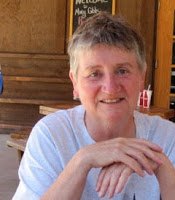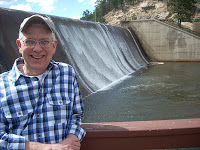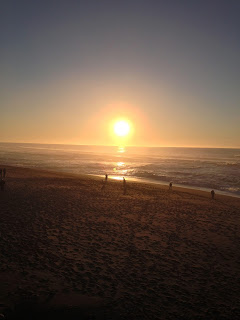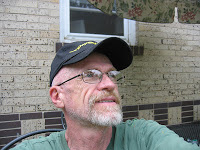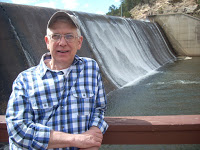I was going to begin with the words, my mother loved flowers. But love is such an overused elasticated word that we are never sure just what it means, so I’ll simply say, flowers were among the most important things in my mother’s life. She rejoiced in the look, feel, and smell of them; the art and science of them. She caressed them with her fingers, her eyes and nose, and her mouth as she whispered their names to them. Not only could she identify any flower with its English name, but for many, she also knew the Botanical. As she read endlessly and traveled more she began eagerly to learn their names in French, German, Spanish, or alternate identities assigned to them in other English-speaking countries.
Take just one example; the simple buttercup. Being water-loving plants, these thrive in Britain. Where we lived they grew like weeds but that did nothing to diminish Mum’s appreciation both of and for them.
The morning sun shone on a cluster of the creeping variety, highlighting their soft golden glow still brightened by the dew.
‘Well, good morning my Beautiful Buttercups,’ she might greet them, whispering so as not to disturb them, very gently caressing the velvet gold petals with the tip of her little finger.
‘How are my favorite little Ranunculi this morning? My Ranunculus repens?’
Then perhaps she would slip into an attempt at a French accent.
‘My bouton d’Or.’
‘Coyote’s eyes’, she might add, in dreadfully Humphrey Bogart American.
She had read, somewhere, that in parts of the Pacific Northwest of the United States buttercups are called “Coyote’s eyes” by the native peoples. According to legend, an apparently very foolish coyote was tossing his eyes up in the air and catching them again when an eagle snatched them. Unable to see, the foolish, but evidently extremely creative coyote, made eyes from buttercups.
She would even offer up poems. In the case of the buttercups, all I remember was one by A.A. Milne, famously the author of the Winnie the Pooh stories, which Mum quoted as –
Head above the buttercups,
Walking by the stream,
Down among the buttercups,
Lost in a dream.
Having just this moment looked up the poem for the purposes of this story, I see that she was misquoting. The original begins –
Where is Anne?
Head above the buttercups,
Walking by the stream,
Down among the buttercups.
Where is Anne?
Walking with her man,
Lost in a dream.
How typical of my mother, I think now, that she should leave out the part about a man. Had there been mention of a child, she probably would have suppressed that, too. For her, I see through the magic of hindsight, love of flowers was a way to forget all humans and the pain that relationships with them can bring. She was safe with flowers. I used to witness the look in her eyes when she caressed them, and ache inside. She never looked at me like that. She didn’t caress me like that. Looking back now, I wonder if my dad ever wondered why she never treated him to such adoration either.
My father was the absolute opposite of my mother when it came to flowers, as was the case with most things. To him, they all belonged in a few very simple generic categories. A red flower was a rose, a blue one a bluebell, a white one a daisy, and a yellow one a dandelion. I think he really did have a genuine disinterest in flowers, quite typical of men of his time and place. Vegetables were a man’s plants. Flowers were women’s work. What good were they? You couldn’t eat them. They were simply a waste of valuable space. They harrumphed at their beauty and trampled their delicacy. Dad didn’t want to destroy them, he simply had no interest in them. But I do think his extreme disinterest and feigned ignorance was at least to some extent simply to tease my mother. Referring to a beautiful bed of dancing daffodils, Mum’s precious narcissus, jonquil, daffadowndilly, as dandelions, or the papery translucent lily as a daisy, was inevitable met with a very irritated, ‘Oh, Edward!’ from Mum and a broad wink from my father to me. Did he persist in this as much when I was not there? I have to wonder now.
Whatever the human dynamics, flowers were a source of much joy to my mother throughout her life. My example of the buttercup was played out with practically every flower she ever encountered, whether nurtured in the garden or wild in the woods. The last time I saw her I arrived at the nursing home with an armful of lilacs from a friend’s garden. She reached out her arms; not to embrace me but to gather the flowers to her.
‘Oh, Syringa!’ she whispered: burying her face in the blossoms, burying her nose in the delicious fragrance. A young girl just bringing in the tea looked at me in puzzlement. She was the daughter of someone I went to school with and new my name perfectly well. She scuttled out as fast as she could when Mum broke into –
When lilacs last in the dooryard bloom’d,
And the great star early droop’d in the western sky in the night,
I mourn’d, and yet shall mourn with ever-returning spring.
She had a remarkable memory. I do not. I had to look this up from what little of it I could remember, eventually tracking it down in a poem by Walt Whitman.
The second verse reads –
Ever-returning spring, trinity sure to me you bring,
Lilac blooming perennial and drooping star in the west,
And thought of him I love.
I had to laugh, even after all these years. Of course, it would be the first verse she quoted, ignoring the second where humans inserted themselves, again unwanted.
It’s OK Mum, I tell her now. We all hope to find whatever gets us through the night. And what could anyone find, in their hour of need, offering more uplift for the spirit, more peace for the soul, than flowers?
© February 2017
About the Author
I was born and
raised in England. After graduation from college there, I moved to the U.S.
and, having discovered Colorado, never left. I have lived in the Denver-Boulder
area since 1965, working for 30-years at IBM. I married, raised four
stepchildren, then got divorced after finally, in my forties, accepting myself
as a lesbian. I have been with my wonderful partner Betsy for thirty-years.
We have been married since 2013.
